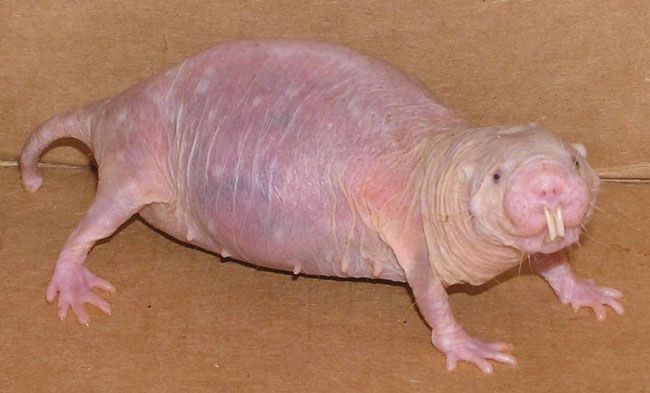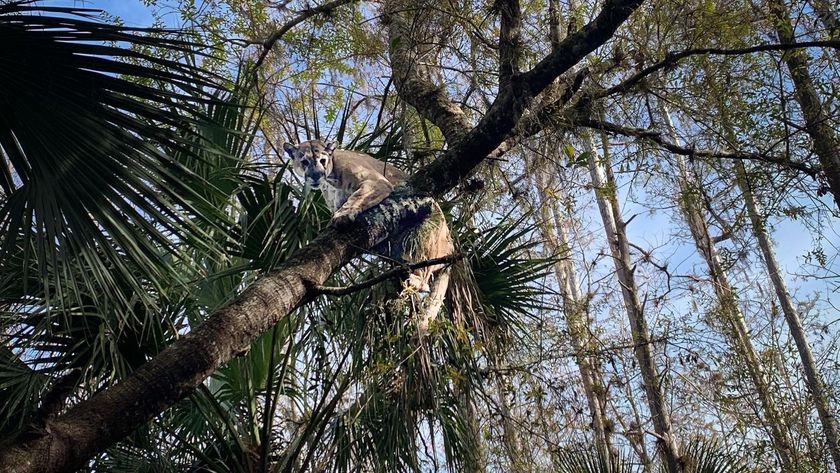Naked Mole Rat Genome May Hold Key to Long Life

The newly deciphered genome of the hairless, underground-dwelling, long-lived and cancer-resistant naked mole rat could help researchers unravel the creature's secrets, and may help improve human health along the way.
"They are very odd, they are really freaky and they have a lot of really interesting specializations," study researcher and naked mole rat enthusiast Thomas Park, of the University of Illinois at Chicago, told LiveScience. "We are working to understand how they come to have these very interesting characteristics. Having the genome gives us a whole new armory of ways in which we can approach this."
The genome could hold the clues to deciphering the naked mole rat's unique life traits, behaviors and social characteristics. Using this information, scientists can learn more about evolution and could even help design better treatments for human disease, such as stroke and cancer, or even possibly find the fountain of youth.
A "very special" mammal
Some find it hideous while others find it adorable, but anyway you cut it, the naked mole rat is a quirky creature. The small sausage-shaped rodent lives in underground burrows with up to 100 members with incredibly low oxygen levels. [10 Amazing Things You Didn't Know About Animals]
The naked mole rat is the only cold-blooded mammal, it is hairless, has horrible eyesight, and is even "cancer-resistant," even though it lives into its 30s (about 10 times longer than other similarly sized rodents). They are even immune to the pain of irritation caused by acids and spicy foods.
The naked mole rat is also the only mammal that lives in a "eusocial" society, similar to that of bees. Only a few of the mole rats get to breed with one queen, while the rest gather food and maintain the nest.
Sign up for the Live Science daily newsletter now
Get the world’s most fascinating discoveries delivered straight to your inbox.
Sequencing the strange
The international team used a method called shotgun sequencing to read the genome of a lab-raised male naked mole rat. They read long strings of chemical bases that the DNA is made of, these bases are like letters that make up the words and sentences that define our genetic code. the researchers thenlined them up to find the where they overlapped, creating longer strings until they covered the full genome. They did this several times to double check for any misread pairs.
After getting a complete genome, the researchers compared it with the genomes of humans and mice. They looked for any significantly different genes. Changes in these genes could inform why some mammals live longer or are resistant to diseases.
Vera Gorbunova, a researcher from the University of Rochester in New York who wasn't involved in the study, is excited about the possibilities. "Having the genome sequence is a starting point. Now with this tool in hand, a lot more analysis needs to be done (and will be possible to do) to understand the naked mole rat longevity and cancer resistance," she said in an email to LiveScience. "These unique mechanisms could be applied for cancer prevention and life-span extension in humans."
Freakish findings
The researchers found that the naked mole rat had turned off several genes related to vision since they live in the dark. They also saw a mutation in the gene dubbed "hairless," previously seen to cause baldness in mice and humans, which could explain how they lost their fur.
While a quick cursory look at the genome sequencing is already shedding light on changes that may lead to the naked mole rat's exquisite uniqueness, the information is also useful for human health. Stroke and heart attack deprive parts of the body from oxygen. Discovering how the mole rats survive in their low-oxygen burrows can help scientists design treatments to improve outcomes.
By comparing this genome with those of other mole rats, including solitary ones, scientists could also tease out how the animal's genes influence their behaviors, Chris Faulkes, a naked mole rat researcher at the Queen Mary University of London, who wasn't involved in the study, told LiveScience.
Sequence for all
"A lot of people will use the information way beyond those who are mole rat fanatics like me; looking at these extreme animals can tell you a lot about more usual species," Faulkes said. "You can apply it to a much broader sphere of things." [Extreme Life on Earth: 8 Bizarre Creatures]
Because the researchers sequenced the whole genome and will make it freely available online, diverse groups that study specific genes involved in cancer and longevity can look up those genes and determine how they may be different in the naked mole rat.
"It isvery basic science," Park said. "But it can be a very useful tool as it gets into the hands of scientists worldwide."
The study was published online Wednesday (Oct. 12) in the journal Nature.
You can follow LiveScience staff writer Jennifer Welsh on Twitter @microbelover. Follow LiveScience for the latest in science news and discoveries on Twitter @livescienceand on Facebook.
Jennifer Welsh is a Connecticut-based science writer and editor and a regular contributor to Live Science. She also has several years of bench work in cancer research and anti-viral drug discovery under her belt. She has previously written for Science News, VerywellHealth, The Scientist, Discover Magazine, WIRED Science, and Business Insider.



